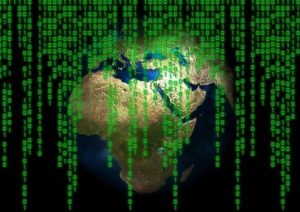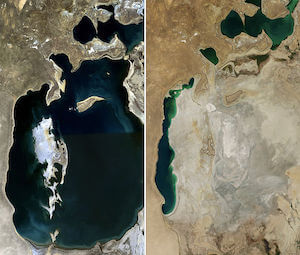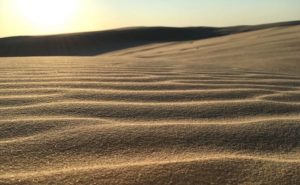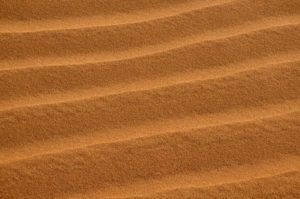Free Software
Well, Kind Of…

Lost in the (Free) Matrix
Many people don't realize it, but the most important software in the world is free.
Various open source programs (called such because their code is available for anyone to download, examine, or use) form the backbone of the Internet. Nearly all the programs that allow the internet to run are completely free, with volunteers maintaining many of them.
Open source software also has a wide array of other functions. You can find free open-source versions of most types of programs. Here are a few of the more useful ones I've stumbled across over the years:
Apache Open Office | A full open source office productivity suite, Open Office is fully capable of replacing the entire Microsoft Office Suite with ease. You can still open, edit, and save files in Microsoft Office formats, as well as in a variety of others. Includes the obligatory word processor, spreadsheet program, and slideshow program. I've been using this one for years.
GIMP | GIMP is an excellent open source alternative to Photoshop. Though it used to have a reputation as clunky, cluttered, and hard to use, GIMP has since developed into a much more streamlined and user-friendly experience. It's widely considered an acceptable alternative, even by industry professionals.
QGIS | Also known as Quantum GIS, QGIS is the fastest and most powerful open source GIS (Geographic Information System) on the market. While ArcGIS, the dominant program on the market, is a bit more versatile, it also costs thousands of dollars and often runs a tad slower than QGIS. If you need to create, examine, or alter maps for free, QGIS is your best bet.
FreeCAD | FreeCAD isn't quite as polished as some of these other options yet remains a good choice for someone looking for an open source alternative to AutoCAD, or the like, for design work.
Oh, a big caveat here: yes, these are all free…though you’ll have to pay hundreds of dollars, along with monthly fees to your Internet service provider, in order to run the stuff.
_________
Quotable
Yes, Yard Ramp Guy. Quotations truly do R-esonate with me:
“Rage is the only quality which has kept me, or anybody I have ever studied, writing columns for newspapers.”
— Jimmy Breslin
Aral Sea Woes
In Uzbekistan No One Can Hear Fish Scream

The Aral Sea: 1989 (l) and 2014 (r).
In the early 1960s, the Aral Sea—in between today's Uzbekistan and Kazakhstan—was one of the four largest lakes on the planet. By 2007, it had reduced to ten percent of its former size.
The Aral Sea's name roughly translates to “The Sea of Islands,” a reference to, shockingly enough, its many islands. It played a vital part in the region's history, economy, and culture, as well as feeding much of the region with rich fisheries. And then, in the early 60s that started to change.
The Soviet Union began a series of projects in the region. The largest of these was the diversion of the two main rivers that fed the Aral Sea, the Amu Darya and the Syr Darya, for the purposes of agricultural irrigation.
The USSR planned to use the water to turn the region into one of the world's largest cotton exporters, and this actually worked, for a little while. As many of the irrigation canals were poorly constructed, they often lost as much as 75% of the water flowing through them.
And so the Aral Sea began a slow but steady decline in water level. The rate of evaporation increased as more and more water was taken from the rivers for irrigation purposes. The Soviet Union was aware that the lake would disappear. They simply weren’t concerned. As more water evaporated and wasn't replaced, the salinity of the lake steadily increased, by almost 500%.
By 2007, at ten percent of its normal size and split now into two lakes, the North and South Aral, it had a salinity almost three times that of the ocean, killing almost all its natural life. (Though it still wasn't as salty as the Dead Sea.)
The huge plains left as a result of the sea evaporation are coated with salt and toxic chemicals (weapons tests, industry, and agricultural runoff.) These nasty sediments are picked up by the wind and carried great distances, causing cancer and other ailments all over the region. There's so much of the toxic dust that the region now regularly has poisonous dust storms.
Some conservation efforts have slowed the evaporation of the sea. Engineers have begun to repair and strengthen the irrigation canals in order to minimize the losses through them. The northern half, in Kazakhstan, has been dammed off from the southern half, resulting in a rise in sea level in the northern half, with salinity levels dropped to the point where life can survive there again.
There's little hope for the southern half. Uzbekistan has no interest in reducing its irrigation demands, or efficiency, and has instead begun working on exploiting the exposed seabed for oil.
_________
Quotable
Okay, Yard Ramp Guy — S-omething to quote (in case yours isn’t quotable):
“Sadness is but a wall between two gardens.”
— Kahlil Gibran
Sand Business
Counting Our Grains
Air and water are our two most heavily-used natural resources and, though not as obvious, dirt is number three. What's number four, though?
Surprisingly enough, it's sand.

Endangered?
We’ve used sand for construction since the time of ancient Egypt, if not longer. We utilize certain high-grade sands for glass, with other grades for detergents, toothpaste, cosmetics, solar panels, and computer chips.
The biggest use? Concrete. Essentially, concrete is just sand and gravel bound together by cement.
You might wonder why I'm distinguishing between dirt and sand. They're both just stuff on the ground, right? Well, no. Dirt contains a high degree of biological debris and is great for growing things in. (It often contains sand.) Sand is just ground up bits of minerals, usually quartz.
As common as sand is, turns out that it's also a finite resource. Humans use more than 40 billion tons of sand and gravel every year, and the demand is getting severe enough that riverbeds and beaches all over the world are being emptied out. We can't use desert sand because it's too rounded to bind together well—a result of wind erosion rather than water erosion.
And shortages are beginning to crop up. The absurd construction boom in Dubai has so denuded local sources that they're literally buying and shipping their sand from Australia now.
As local riverbeds, beaches, and quarries run out, sand miners have started to turn to the seafloors, vacuuming up sand from the seabed while dealing marine ecosystems massive amounts of damage.

Alarming ripples.
At least two dozen Indonesian islands are simply gone now due to Singapore's sand requirements (its artificial land construction projects make it the largest sand importer in the world). Environmental damage in the region has gotten so bad that three countries have already banned exports of sand to Singapore.
Construction sand now even has a black market, profitable enough that violent organized crime groups are building up around it.
The environmental damage from the sand trade is immense. This hardly gets any attention in much of the world. After all, it's just sand, and for millennia now we've used “grains of sand” as a metaphor for something countless.
Our sand turns out not to be countless after all.
_________
Quotable
Ahem, Yard Ramp Guy — T-ry this one on for size:
“Take away the cause, and the effect ceases.”
— Miguel de Cervantes
Balancing History
Let’s Not Do the Time WARPF
In this space, I delve into history often. Aside from my grandkids, it’s pretty much my favorite thing to talk about. (And I do love to talk.)
On a few entries, I’ve mentioned my problems with the standard views on history taught in school. And I figure that now is as good a time as any to lay out my objections. McCoy’s Theory of History, if you will. I think I can largely sum it up in a single phrase:
History focuses too much on the flashy stuff.

History: The Unflashy Version
Wars, assassinations, revolutions, plagues, famines. Let’s call all that WARPF. I certainly don’t think we should ignore that stuff, but WARPF makes for an extremely incomplete view of history. Much of the time, WARPF fails to recognize the importance of the conditions around those events.
Even within the flashy stuff, history often gets its priorities wrong. We usually treat wars with greater importance than plagues, despite the fact that plagues are almost always more devastating.
In McCoy’s Theory of History, we need to focus more on history’s logistical issues. There’s an old saying that’s been rephrased a thousand times by military men: “Amateurs talk about tactics, but professionals study logistics.” Understanding how a society was able to accomplish something is as important as knowing what it accomplished.
While many would also consider the infrastructural questions—i.e., what civilizations built and how they built it—to be a part of the logistical category (and they wouldn't be wrong), I would put them into another category, simply for their disproportionate importance.

Food as Anthropology: Delicious
I’m not the only one who has noticed these problems. Many serious historians are taking steps to deal with them. Environmental History is a brand new field (well, about 20 years old now, but that’s pretty new for history). It deals with how civilizations affect and are affected by nature. Culinary History is another new one that deals with how humans eat. While not as momentous as environmental history, the culinary angle is far more fundamental to being human.
History needs to be seen not as a list of events but as an ongoing story, each part changing every other. With this approach, we get a better—more linear, more connected—picture that’s also considerably more interesting to students.
Of course, it’s entirely likely that all of this is just me getting a swelled head. I’ve never been short on ego. Maggie will confirm that one if you ask. Probably even if you don't ask.
_________
Quotable
Okay, Yard Ramp Guy — U decide who has the better quotation this week:
“Ultimately the bond of all companionship, whether in marriage or in friendship, is conversation.”





